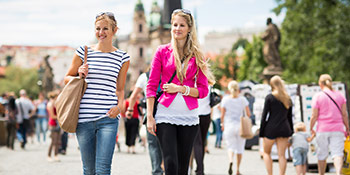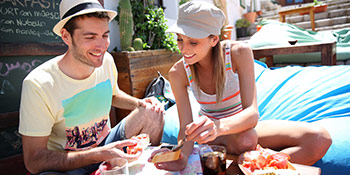Phone: + 39 0541 798670 E-mail: office@bistravel.it
Veneto, Italy
Veneto, ITALIAN REGIONS-
 View Largebtravel_veneto_1
View Largebtravel_veneto_1 -
 View Largebtravel_veneto_2
View Largebtravel_veneto_2 -
 View Largebtravel_veneto_3
View Largebtravel_veneto_3 -
 View Largebtravel_veneto_4
View Largebtravel_veneto_4 -
 View Largebtravel_veneto_5
View Largebtravel_veneto_5 -
 View Largebtravel_veneto_6
View Largebtravel_veneto_6 -
 View Largebtravel_veneto_7
View Largebtravel_veneto_7 -
 View Largebtravel_veneto_8
View Largebtravel_veneto_8 -
 View Largebtravel_veneto_9
View Largebtravel_veneto_9
Situated in Italy’s northeast, Veneto extends from the Dolomites to the Adriatic Sea, by way of an expansive range of hills and a valley furrowed by rivers, canals and the Po River Delta.
The typical scenery of Veneto’s coast is the Venetian lagoon, and, right on this very lagoon stands perhaps the most unique city in the entire world – Venice, visited by millions of tourists every year.
Yet all of the Veneto, a region with a thousand different faces, is the custodian of natural, artistic, and traditional treasures.
Veneto expresses an extraordinary variety in its scenery: from the Dolomites, dipped in the crimson shades of the sunset, to the eastern shore of Lake Garda and Peschiera del Garda, Torri del Benaco and other tourist destinations. Long, sandy beaches alternate with well-known resorts such as Jesolo, Bibione, Cavallino and Caorle.
In this spectacular natural setting lies a rich cultural heritage that renders the Veneto such a fascinating region, from its cities of art to the magnificent Palladian villas scattered along the Brenta Riviera. And not to be forgotten are the small villages of Arquà Petrarca, Monselice, Asolo and Bassano del Grappa that bring together the most typical aspects of this diverse and varied region.
Veneto is also an ideal destination for a vacation of comfort and relaxation, thanks to its possession of thermal waters with their valuable therapeutic properties: the gentle slopes of the Euganean Hills are home to the well-equipped facilities of the Euganean Spas: e.g. Abano, Montegrotto and Teolo, where guests can combine treatments and therapies with pleasant excursions out into the surrounding areas.
The provinces of the region are: Venice (regional capital), Belluno, Padua, Rovigo, Treviso, Verona and Vicenza.

Veneto is a region full of fascination and charm, with countless natural and artistic attractions, as well as a wide range of not-to-be-missed sights and localities.
The first stop on your journey of discovery, naturally, should be Venice, a UNESCO World Heritage Site that also comprises its lagoon, islands and the Grand Canal, flanked by ancient, embellished buildings that recall the splendor of the ancient Maritime Republic.
Venice, famous for its historic Carnival, Murano glass, and Burano lace, can be visited on foot, via small lanes (called calli) (and over numerous bridges) – or by boat – from steamboats to gondolas, carrying passengers along the canals to admire some of the most singularly special panoramas in the world. Piazza San Marco, with its Basilica flaunting Byzantine mosaics and domes; the Doge’s Palace, the labyrinth of lanes dotted by shops and workshops; churches decorated with paintings, sculptures and frescoes; museums and even the most hidden piazzas, are all unforgettable.
Another site on the UNESCO list is Verona’s historic center, a unique blend of the Renaissance, Medieval and Roman architectonic styles.
The city’s most famous monuments are Juliet’s romantic balcony, made famous by Shakespeare’s tragedy, and the arena, which becomes a spectacular outdoor opera house during the summer.
Nature is another one of the Veneto’s excellencies: the Dolomites were recently added to the UNESCO World Heritage List due to their remarkable shape and the fascinating interplay of light between their peaks and pinnacles.
This is the ideal world for ski enthusiasts: a huge area with miles of slopes and well-equipped resorts – first among them, the exclusive and elegant Cortina d’Ampezzo, the “pearl” of the Dolomites and one of the most famous mountain resorts in the world.
Padua, the city of culture par excellence, offers its visitors many attractions, from the Basilica of St. Anthony, a destination for religious tourism, to the wonderful Scrovegni Chapel, a timeless masterpiece entirely frescoed by Giotto. Its 16th-Century Botanical Garden, rich in medicinal herbs, is also a World Heritage Site.
The historic center of Vicenza, characterized by the classical style of architect Andrea Palladio, has also been granted UNESCO status, together with the marvelous stately homes he designed, including the stunning Villa Capra Valmarana and Villa Poiana, surrounded by great parks.
This region has many more surprises in store for visitors to Belluno, Treviso and Rovigo. Even the smallest towns are steeped in history and culture: Asolo, a picturesque Medieval village; Possagno, dominated by the Mausoleum of Canova; and the walled towns of Cittadella, Monselice, Montagnana and Castelfranco Veneto, are by now integral parts of the regional landscape.

Mountain, sea or hill, the Veneto region offers exciting vacations in natural surroundings, with the opportunities for sport, relaxation and enjoyable experiences.
From the Dolomites to Lessinia, famous resorts like Cortina d’Ampezzo, Falcade, San Vito di Cadore and others offer peerless experiences for winter sports enthusiasts: adrenaline-fuelled slopes for skiing or snowboarding, snow-rafting, climbing, trekking at all levels, special courses for cross-country skiing, snowshoe walks and exciting dogsled races.
The golden coast that stretches from Bibione to Cavallino is perfect for working out: beach volleyball, sailing, surfing, waterskiing and cycling in cool pinewoods and pristine surroundings. Enjoy the nightlife in the trendy bars and clubs of tourist resorts. Golf enthusiasts will find several “greens” in the hills, with Lake Garda in the background or near the coast.
Nature lovers can go on excursions or follow trekking trails in the protected areas of Veneto, such as the National Park of the Dolomites of Belluno, renowned for its breathtaking scenery, or the Park of Lessinia, where you can see the typical fauna of the foothills of the Alps.
You can visit many places while mountain biking, including the Asiago Plateau, which is crossed by a network of trails with different levels of difficulty, amid extraordinarily beautiful landscapes.
The charming Po Delta and the other areas of the lagoon, dominated by the reflection of the sky on the water and populated by hundreds of bird species, are a real paradise for those who enjoy bird-watching and nature photography, while the shores of Lake Garda, surrounded by the typical Mediterranean scrub, offer plenty of room for water sports, sailing, boating and scuba diving.
You can enjoy a relaxing stay at the many spas in the region, including the renowned Terme Euganee (Euganean Spas), with treatments and beauty therapy to restore balance between body and mind.
Lovers of good food can follow the many wine trails: from Bardolino to Pramaggiore, from Conegliano to the other areas that have become known for their wine production, stopping at the wineries to taste excellent wines and typical products.
The schedule of events is always full; some of these events are renowned worldwide, especially the Biennale and the Carnival of Venice, followed by exhibitions and art shows, several religious and village festivals, and the food fairs (sagre), even in the smallest village.

Although the cuisine does differ from one province to another, the food of the region is based on some common ingredients: rice, vegetables and especially polenta.
Polenta, particularly loved by the natives of Veneto, is prepared and eaten with meat, fish or cheese. Beans from Lamon (province of Belluno) are a typical product of the area, as is asparagus from Bassano del Grappa, the celeriac of Verona and the red radicchio of Treviso, which has become a universal ingredient even outside Treviso.
Another specialty of this province is the soapa calda, a warm soup with pigeon and chicken; in the nearby areas of the Alps you can also have mushrooms and roe deer, while the Asiago Plateau is well-known for its cheese.
In the lagoon, on the other hand, it’s seafood.
Among the typical dishes of the area are risotto with scallops, scampi and cuttlefish, saor (sardines marinated with vinegar and onions), dried salt cod or Vicenza-style cod. Stewed eel (bisato) is a Venetian specialty.
There are many typical desserts, including fritters, zaletti (polenta cookies), Carnival galani (pastries) and the pandoro from Verona that later became renowned nationally.
Veneto also boasts an extensive and valued production of red and white wines, including Amarone di Valpolicella, Breganze Bianco, Bardolino and Soave, to mention but a few. Raisin wines are best represented by the Recioto di Soave; sparkling wines (spumante) are also a favorite , in particular Prosecco from Conegliano-Valdobbiadene. The production of grappa is remarkable in Bassano del Grappa and in Conegliano.

NEWSLETTER